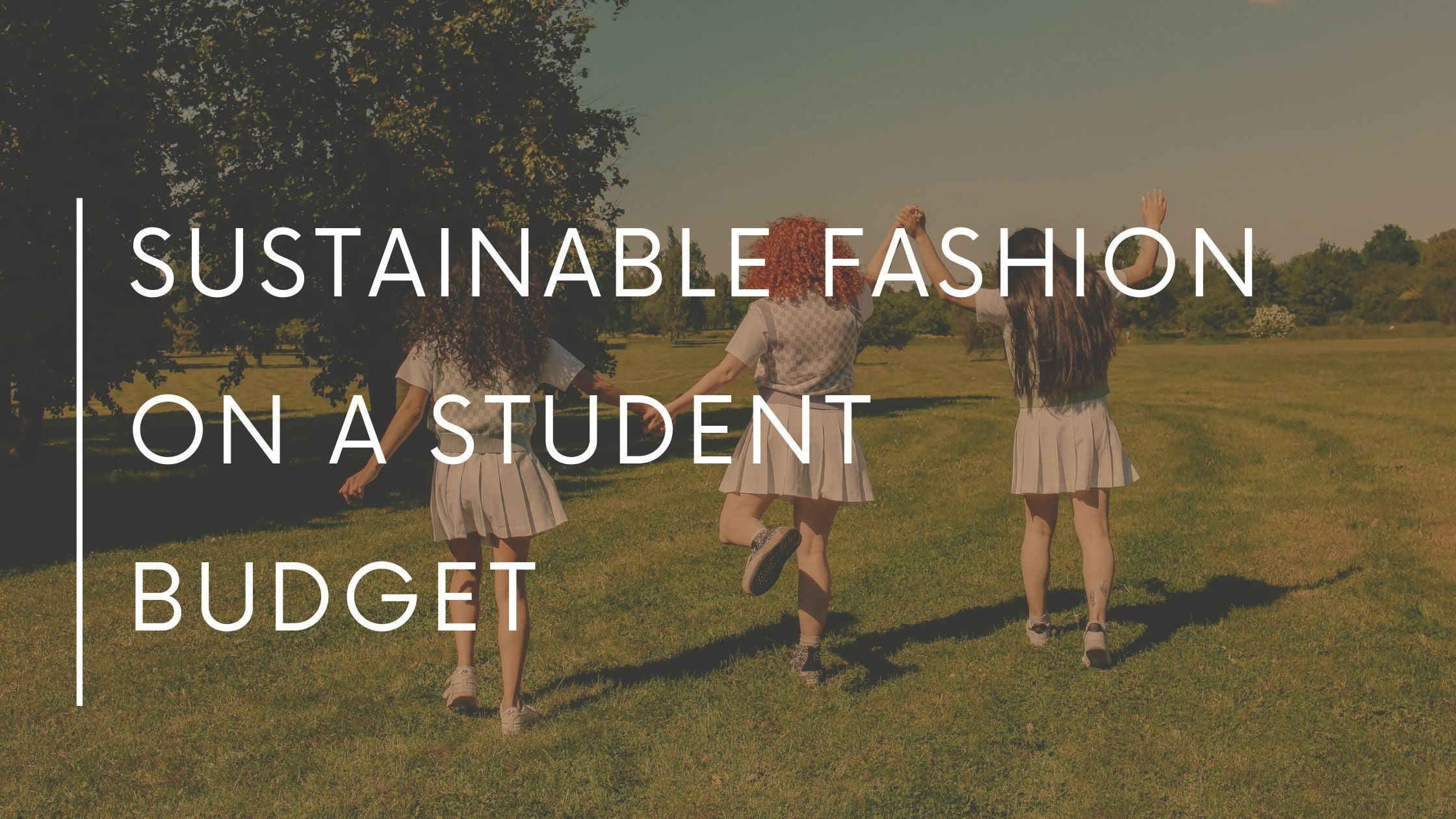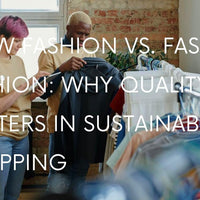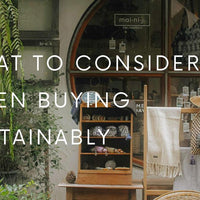Sustainable Fashion on a Student Budget
As college students, we're constantly bombarded with messages about the importance of sustainable living and minimizing our environmental impact. But let's be real - being eco-friendly isn't always easy, especially when it comes to fashion. Exploring thrift shopping, clothing swaps, and upcycling techniques enables students to embrace sustainable fashion practices on a budget, with the option to have professionals do my paper for me providing valuable insights and resources for academic research on the topic.
Fast fashion retailers lure us in with their trendy, affordable pieces, making it tough to resist the temptation of a closet overhaul every season. However, the negative effects of the fast fashion industry on the planet and garment workers can no longer be ignored, as it contributes to excessive waste, pollution, and unethical labor practices.
The Harsh Reality
The fast fashion industry is a major culprit in the ongoing climate crisis, with its resource-intensive production methods and reliance on non-biodegradable synthetic materials contributing significantly to greenhouse gas emissions, water pollution, and the depletion of non-renewable resources. Furthermore, the high turnover of trends and the constant push for "newness" encourages a throwaway culture, leading to millions of tons of textile waste ending up in landfills or incinerators each year.
Ethical Alternatives Exist
Embracing sustainable fashion practices such as thrifting, clothing rental, and DIY alterations empowers students to cultivate eco-friendly wardrobes without breaking the bank, while collaborating with the best assignment writing services in Australia offers expert guidance and resources for academic exploration of this important subject.
Fortunately, as conscious consumers, we have the power to drive change by supporting sustainable fashion brands and adopting more mindful shopping habits. While sustainable fashion may have once been synonymous with exorbitant price tags, the landscape is rapidly evolving, with an increasing number of affordable and ethical options available to those willing to explore beyond the mainstream.
Building a Sustainable Wardrobe on a Budget
Thrifting: The Ultimate Treasure Hunt
One of the most budget-friendly and sustainable ways to shop for clothing is by exploring thrift stores, consignment shops, and online secondhand marketplaces. Not only does thrifting prevent perfectly good items from ending up in landfills, but it also allows you to score unique pieces at a fraction of their original cost. With a keen eye and a bit of patience, you can curate a one-of-a-kind wardrobe that reflects your personal style while reducing your environmental footprint.
Clothing Swaps: A Win-Win Situation
Another cost-effective and eco-friendly approach is to organize or participate in clothing swaps with friends or within your community. This circular fashion model not only allows you to refresh your wardrobe without spending a dime but also promotes a shared mindset of sustainability and resource conservation. By exchanging items you no longer wear for "new-to-you" pieces, you're extending the life cycle of clothing and reducing waste.
Ethical and Sustainable Brands: Quality over Quantity
While thrifting and clothing swaps are excellent options, there may be instances where you need to purchase new items, such as undergarments or specialized attire. In these cases, it's crucial to seek out ethical and sustainable fashion brands that prioritize environmentally-friendly practices and fair labor conditions. These brands often use eco-friendly materials, implement closed-loop production systems, and support transparent supply chains.
One long and complex academic sentence highlighting the importance of supporting sustainable fashion brands: Although the upfront cost of investing in quality, ethically-produced garments may seem daunting for students on a tight budget, it is a worthwhile investment in the long run, as these pieces are designed to withstand the test of time, ultimately saving you money while simultaneously reducing your environmental impact and supporting fair labor practices, which aligns with the principles of conscious consumerism and social responsibility. A short, simple sentence follows: Slow fashion trumps fast fashion.

Shopping Smart: Maximizing Your Budget
Quality Over Quantity
When it comes to building a sustainable wardrobe on a budget, it's essential to prioritize quality over quantity. Instead of buying cheap, disposable items that will quickly end up in the landfill, focus on investing in well-made, versatile pieces that can be mixed and matched to create multiple outfits. This approach not only reduces waste but also saves you money in the long run by eliminating the need for constant replacements.
Versatility is Key
Look for versatile items that can be dressed up or down, transitioning seamlessly from class to a night out. A simple black dress, for example, can be accessorized in countless ways to create different looks. Opt for classic, timeless pieces that won't go out of style quickly, ensuring you can wear them for years to come.
Care and Repair
Extending the life of your clothes is another crucial aspect of sustainable fashion. Learn basic mending skills, such as sewing on buttons or patching holes, to repair and revive worn items. Proper care, such as following washing instructions and using eco-friendly laundry detergents, can also help your clothes last longer.
Capsule Wardrobe: Less is More
Embracing the concept of a capsule wardrobe can be a game-changer for sustainable fashion on a budget. A capsule wardrobe consists of a limited number of carefully curated, high-quality pieces that can be mixed and matched to create numerous outfits. By focusing on a smaller, more streamlined collection of clothing, you'll not only reduce waste but also save money by eliminating impulse purchases and unnecessary clutter.
Ethical Fashion: A Mindset Shift
Beyond the Financial Benefits
Embracing sustainable fashion extends far beyond just saving money; it's a mindset shift that encompasses ethical considerations, environmental awareness, and a commitment to conscious consumerism. By supporting brands that prioritize fair labor practices, use eco-friendly materials, and implement sustainable production methods, you're actively contributing to a more just and sustainable future for the fashion industry and the planet as a whole.
Influence and Advocacy
As students, we have a unique opportunity to influence the fashion industry and shape its future direction. By making conscious choices and advocating for sustainable practices, we can collectively drive demand for ethical and environmentally responsible fashion. Share your knowledge and experiences with your peers, use social media platforms to amplify sustainable brands, and engage in campus initiatives that promote sustainable living.
The Ripple Effect
Remember, every purchase you make has a ripple effect that extends far beyond your personal wardrobe. By prioritizing sustainable fashion choices, you're contributing to a larger movement that challenges the status quo and inspires others to adopt more mindful practices. Your actions today can pave the way for a more sustainable and equitable fashion industry tomorrow.

Conclusion
Embracing sustainable fashion on a student budget is not only possible but also a powerful statement of your values and commitment to environmental and social responsibility. By exploring thrifting, participating in clothing swaps, supporting ethical brands, and adopting a mindful approach to consumption, you can curate a stylish and unique wardrobe while minimizing your environmental impact and supporting fair labor practices. Remember, true style transcends fleeting trends and fast fashion; it's about expressing your individuality while making conscious choices that align with your values and contribute to a more sustainable future.








0 comments